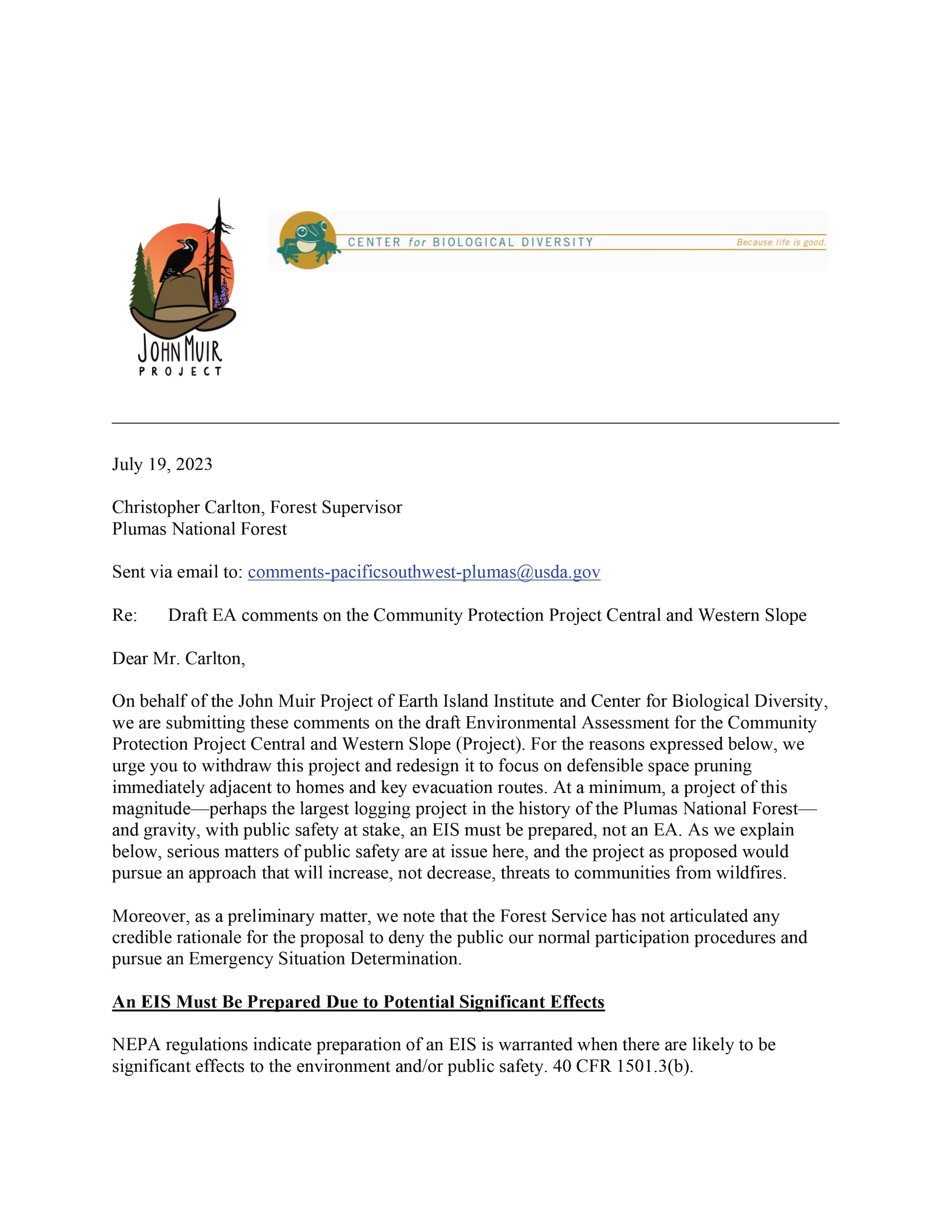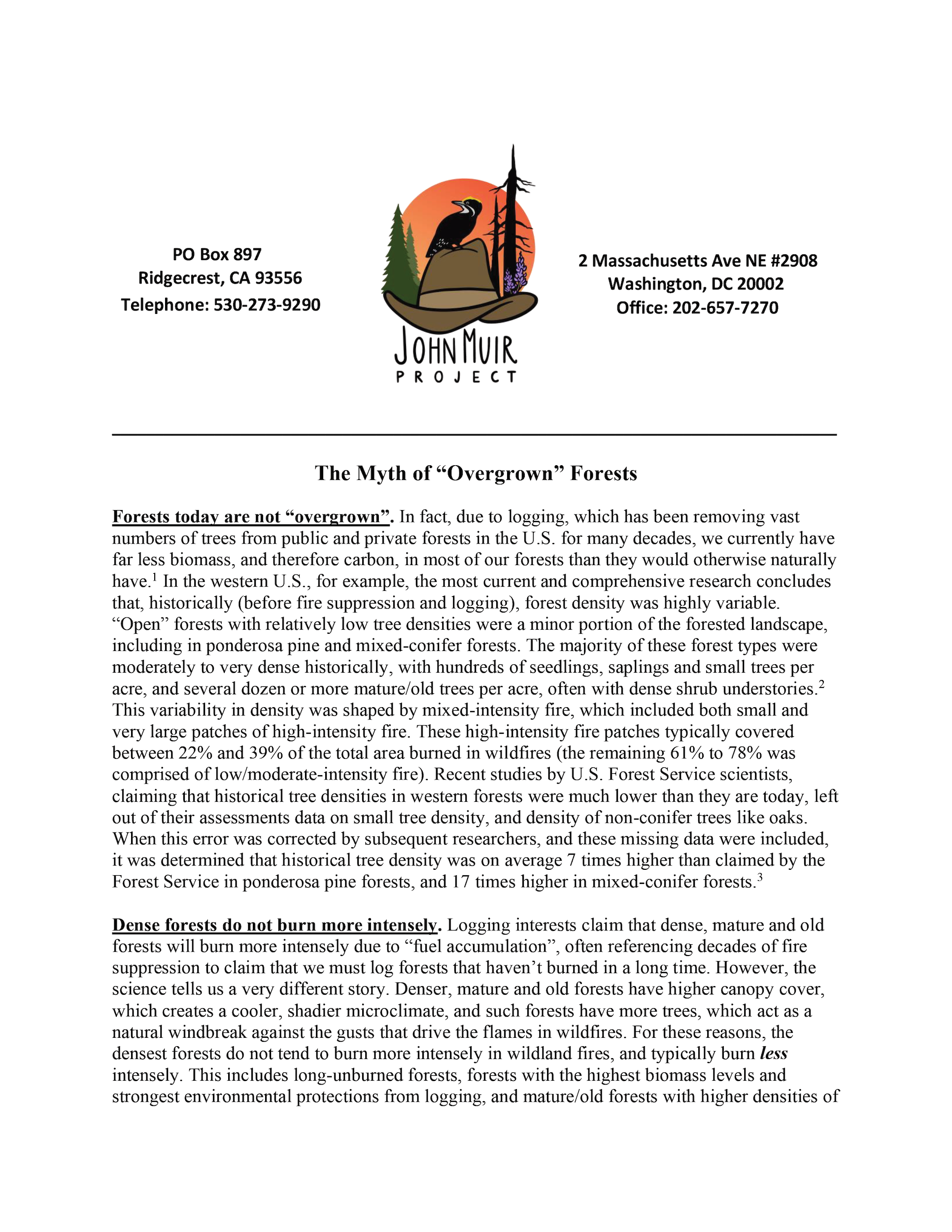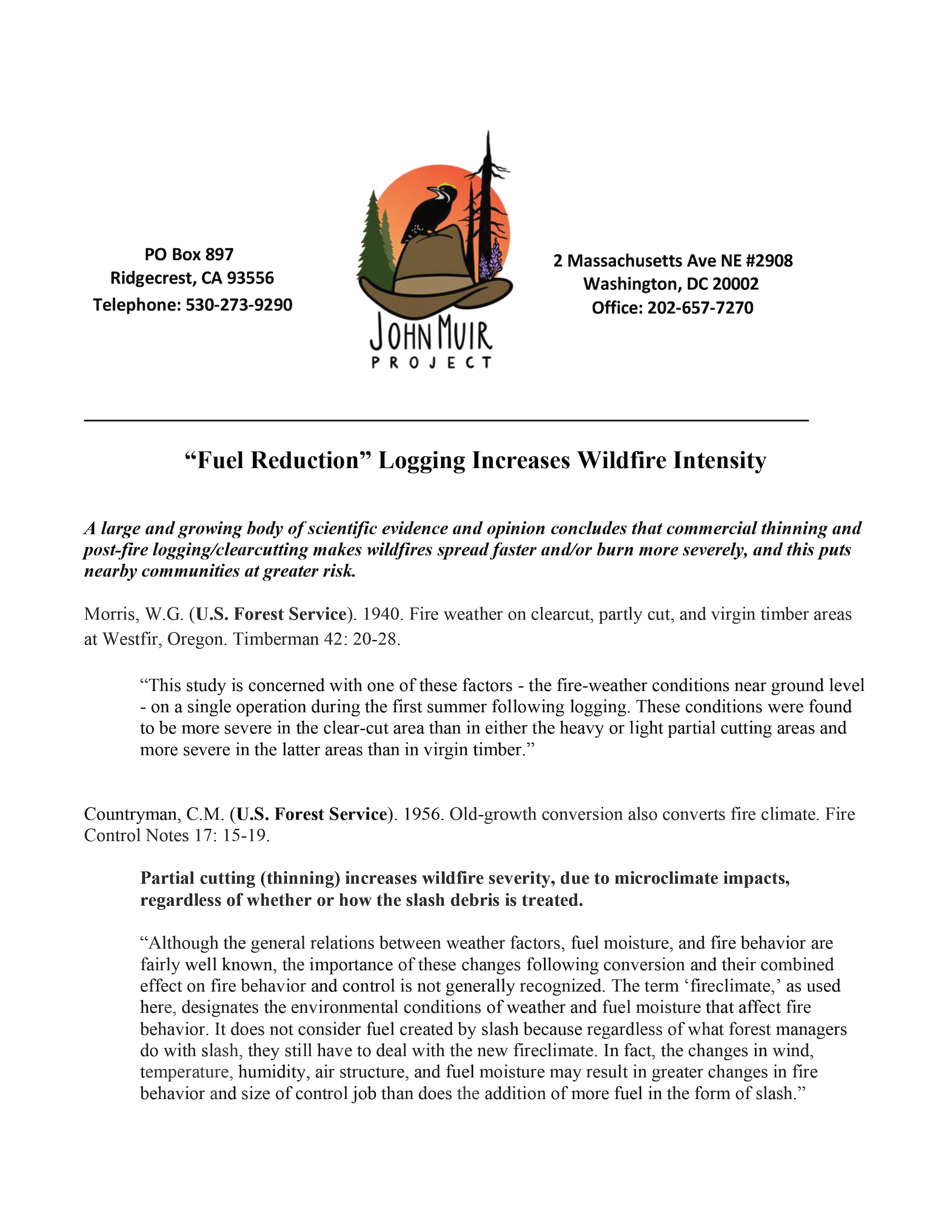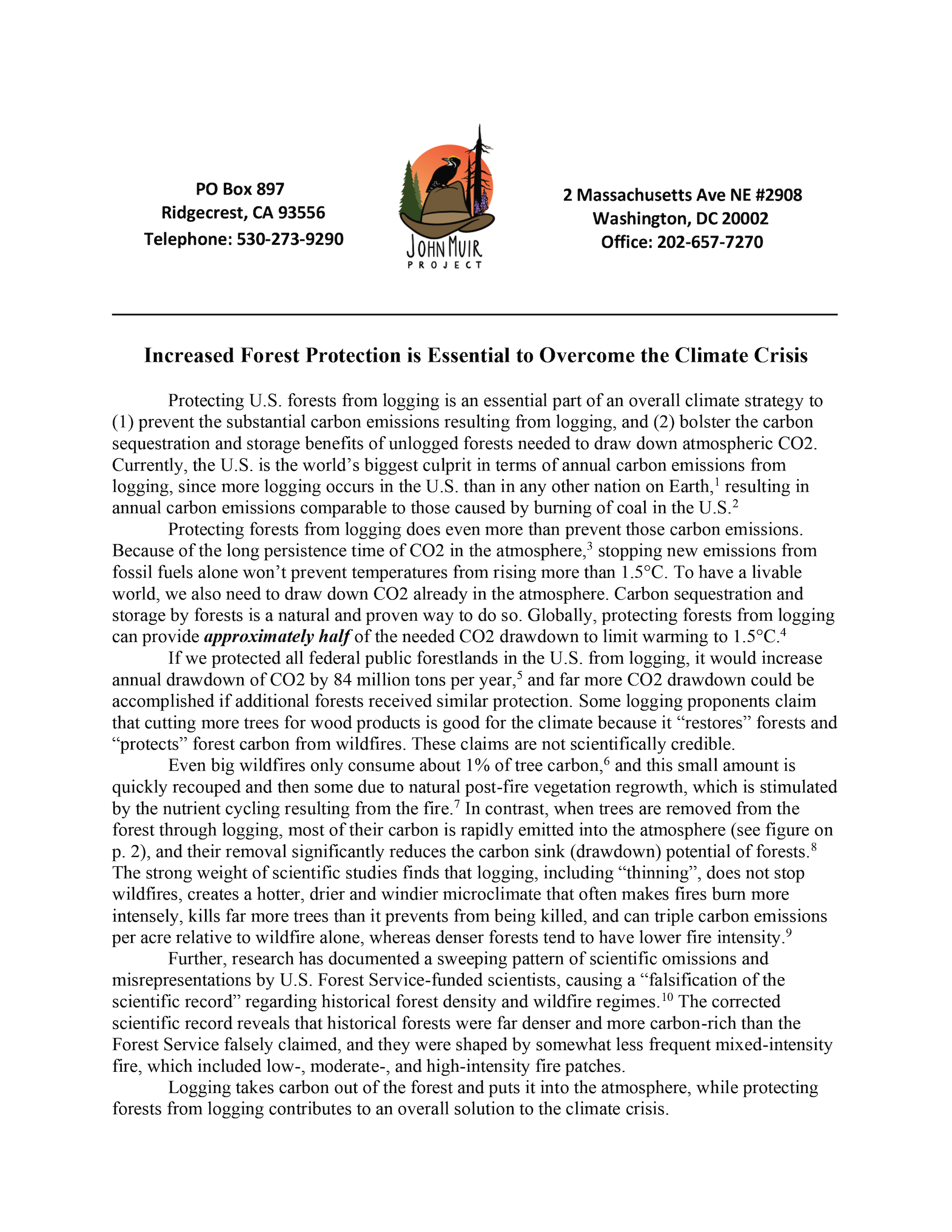Forest Watch
We monitor commercial logging projects proposed by the U.S. Forest Service on our National Forest lands in the western U.S., particularly in the Sierra Nevada mountains.
Since the National Park Service is now trying to begin a commercial logging program on National Park lands in California, we have included Parks in our forest watch work as well. In addition, we often assist forest protection groups who are challenging logging projects on public and private lands across the United States. The John Muir Project has protected over 1 million acres of forest habitat in the Sierra Nevada alone, including both mature and old-growth forest and ecologically-rich "snag forest habitat" created by natural processes such as wildland fires.
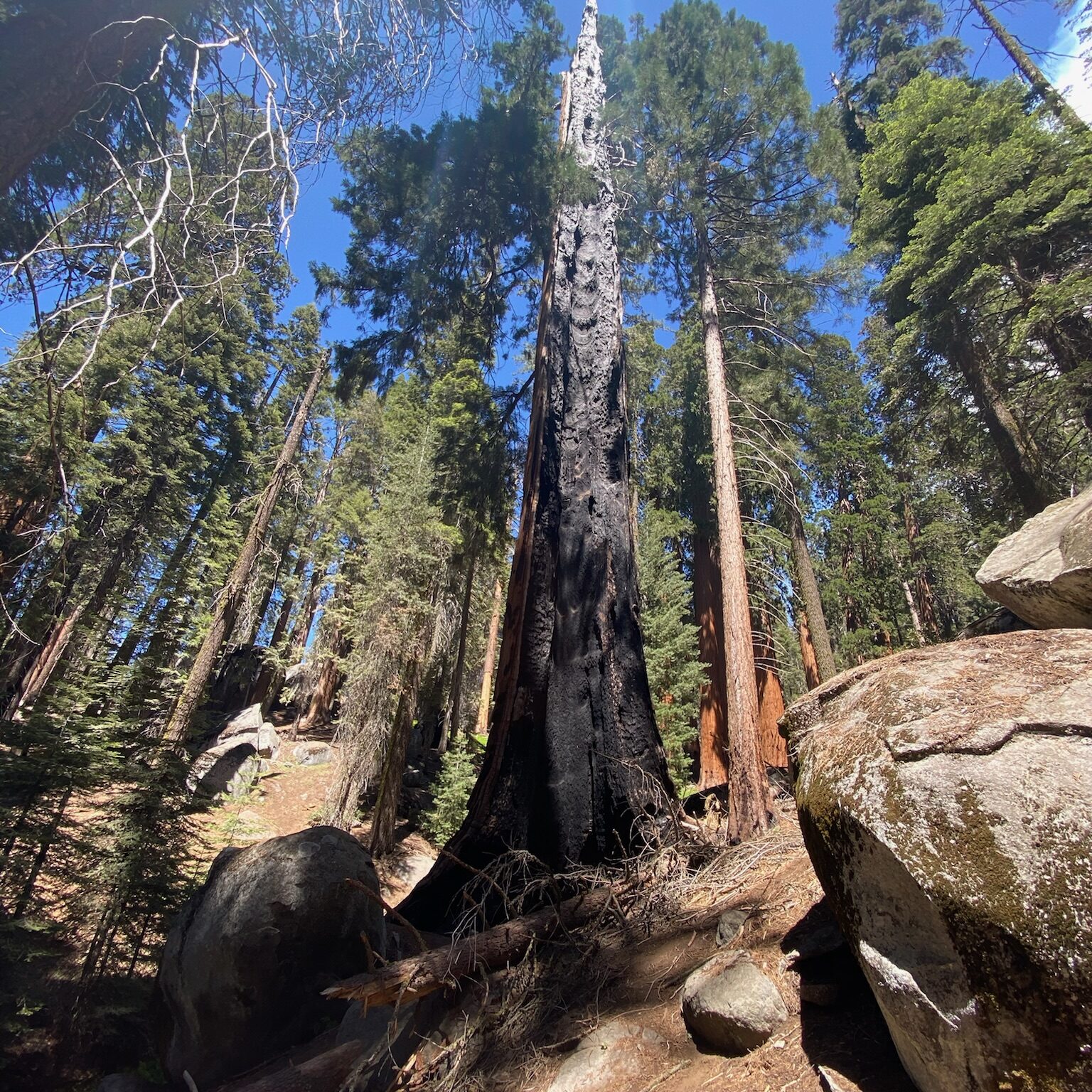
How We Do It
Identify Projects
We review the schedule of proposed activities list prepared by individual National Forests each quarter and identify the projects of greatest concern.
Document Conditions
We visit the project areas, document the on-the-ground conditions in the project areas, and submit detailed comments on the projects.
Review Proposals
We meet with the Forest Service to review the proposal and encourage ecologically based management and protection of imperiled species habitat.
Generate Media
We generate media coverage regarding the adverse impacts of logging projects to forest ecology, community safety, and the climate crisis and, in some cases, we file lawsuits to uphold environmental laws.
Monitoring Efforts
Post Fire Habitats
We keep a close watch on post-fire (a.k.a., "salvage") logging projects proposed in forests that recently experienced wildland fire.
In an attempt to justify logging and clearcutting hundreds of thousands of acres of ecologically vital post-fire habitat on our National Forests, the Forest Service makes three main false claims.
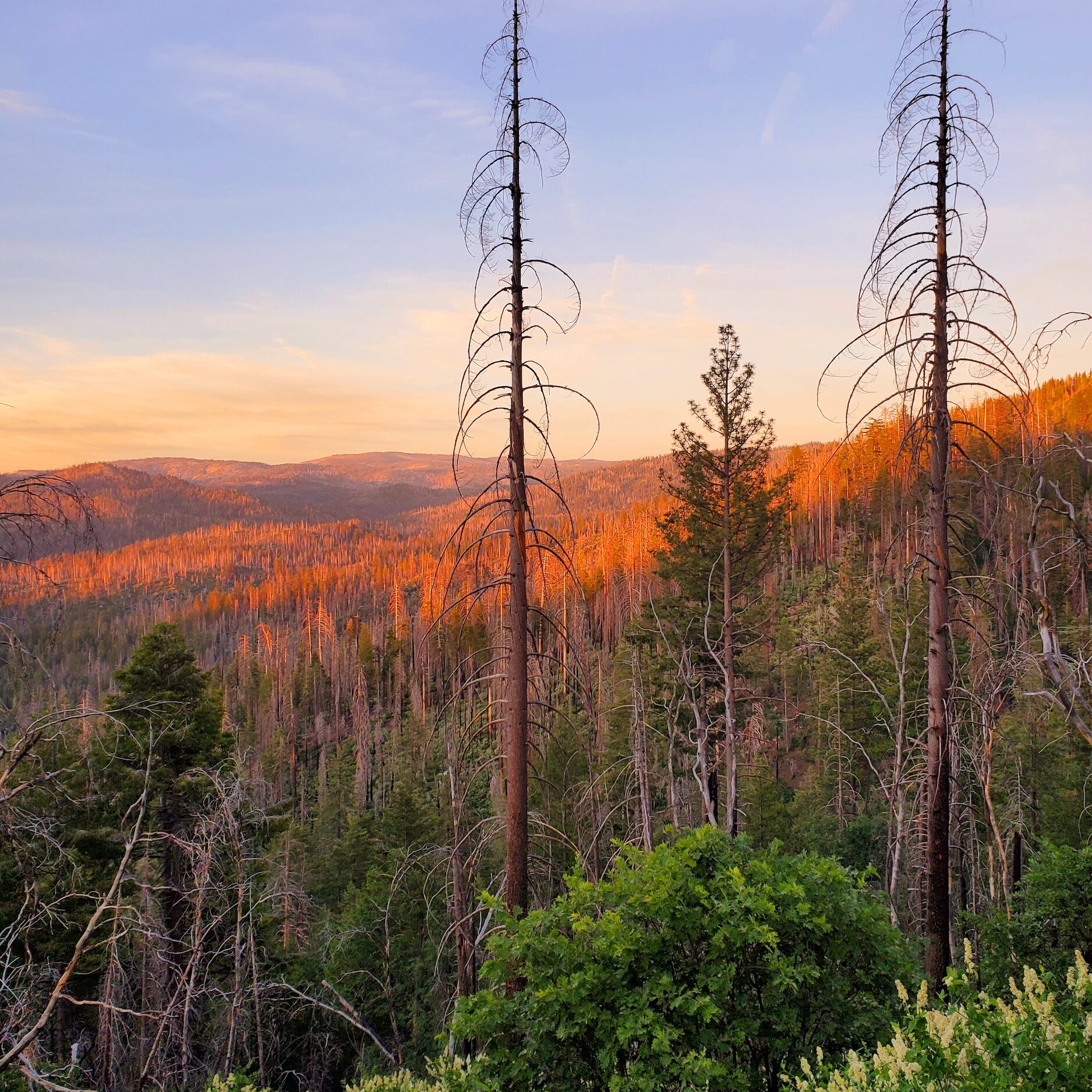
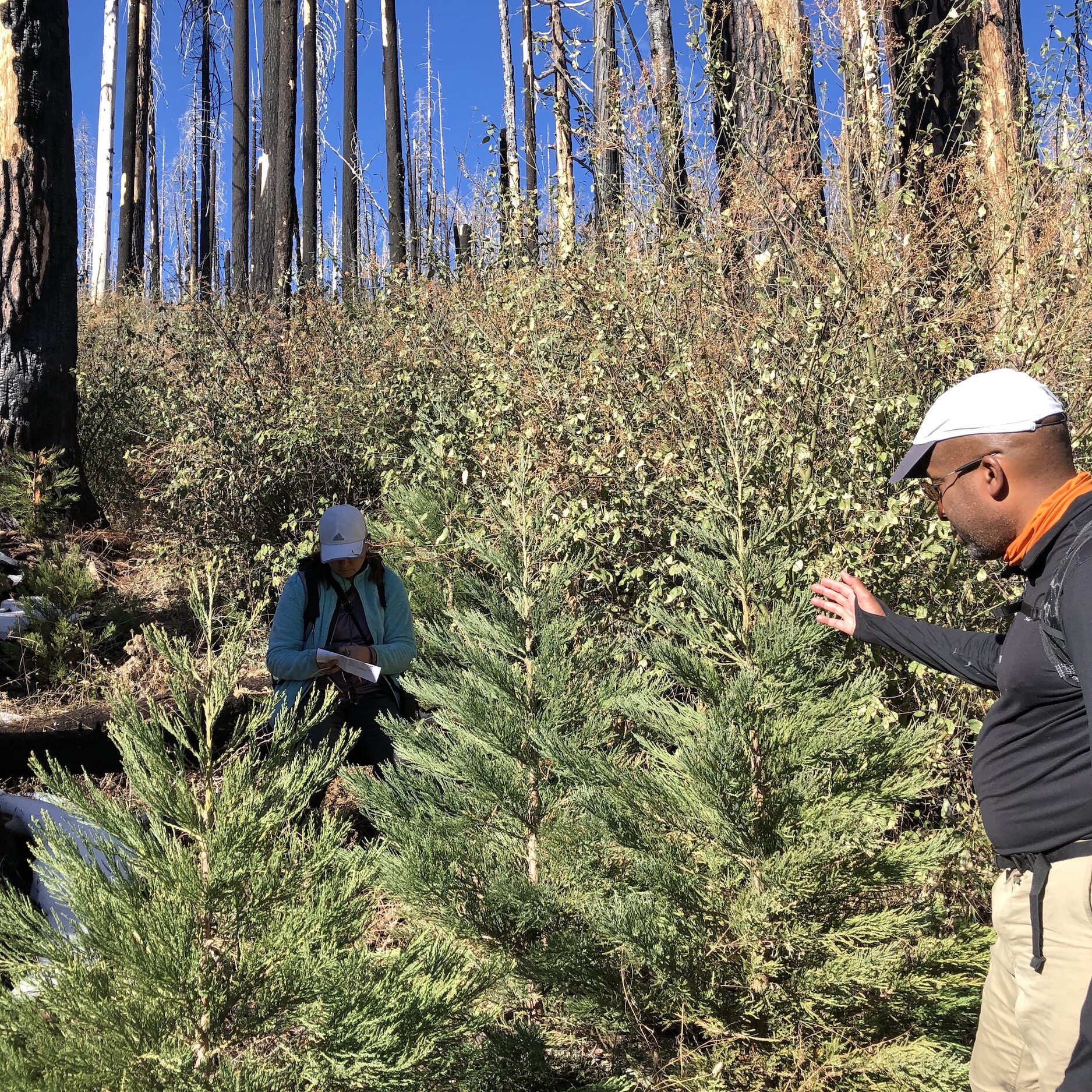
Fact: There is now abundant scientific evidence of the existence of large fires before industrial fire suppression began.
JMP works to stop, or greatly reduce the amount of, forest habitat that will be lost due to post-fire logging projects. We strive to get the truth out to the public about these important snag forest habitat areas, and the damage caused by post-fire logging.
In one recent example, The Creek Fire burn area, JMP's detailed comments, including the submission of many scientific studies, and an administrative objection, has so far protected over 150,000 acres of ecologically vital snag forest habitat that the Sierra National Forest had proposed to subject to post-fire clearcutting. Only about 150 acres of the planned logging has occurred, largely due to JMP's forest watch work. There are many other examples of vast areas of snag forest habitat protected by JMP's forest watch program, including entire ecosystems and stored forest carbon that we have protected through forest watch without ever having to file a lawsuit.

Example Comments
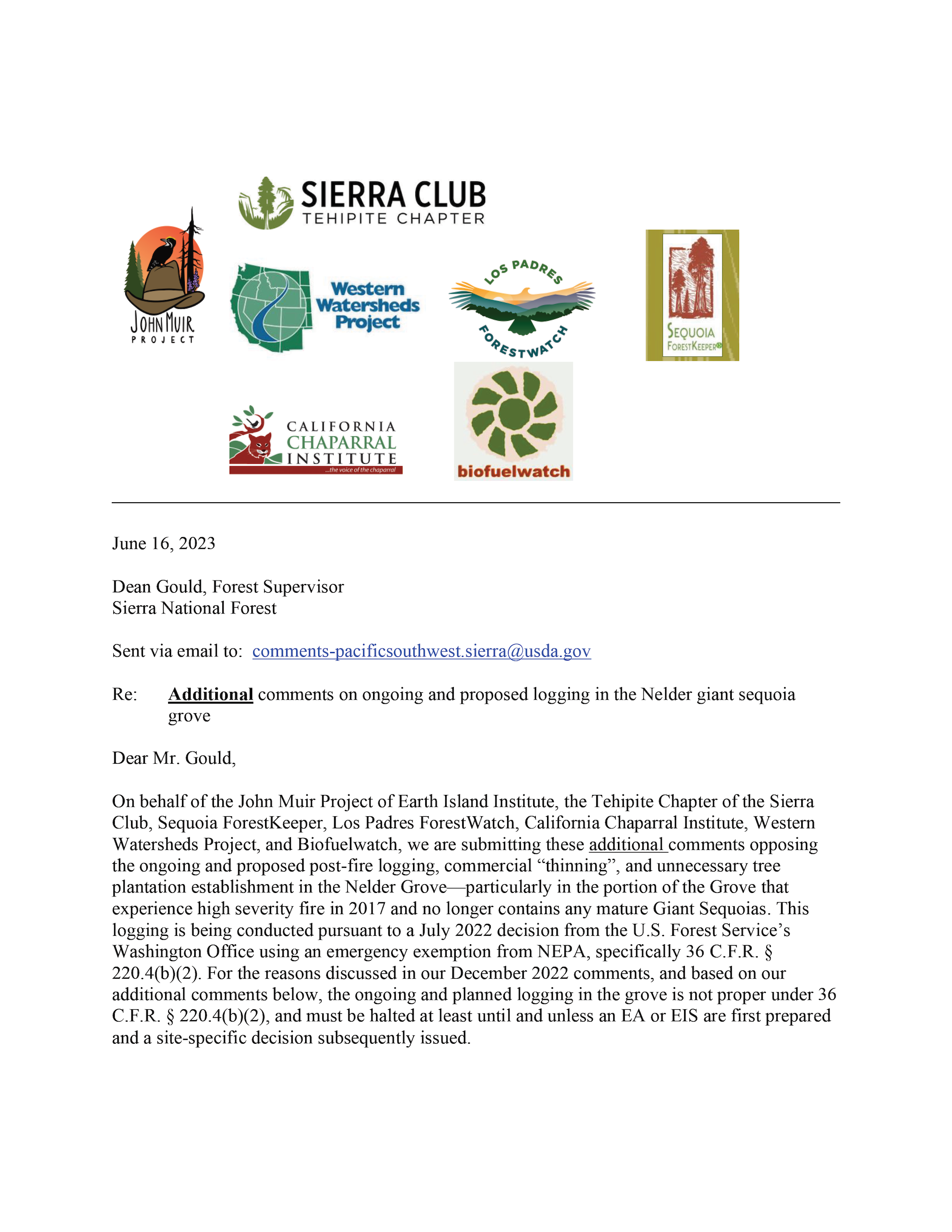
Nelder Grove Comments

Castle Fire Scoping Comments
Mature and Old Forest
We monitor logging projects proposed in Mature and Old Forest.
To justify large commercial logging projects in mature/old-forest on public lands, the U.S. Forest Service misleadingly tells the public that such forests are too dense and "overgrown" and that logging, under the guise of "thinning", is needed supposedly to curb wildfires.
These "thinning" projects are typically located far from homes and kill and remove upwards of 70% of the trees in a given stand, including many mature and old-growth trees up to 8 or 10 feet in circumference. By removing so much of the forest, these "thinning" timber sale projects change the microclimate of the forest creating hotter, drier, and windier conditions putting communities at greater risk rather than protecting them.
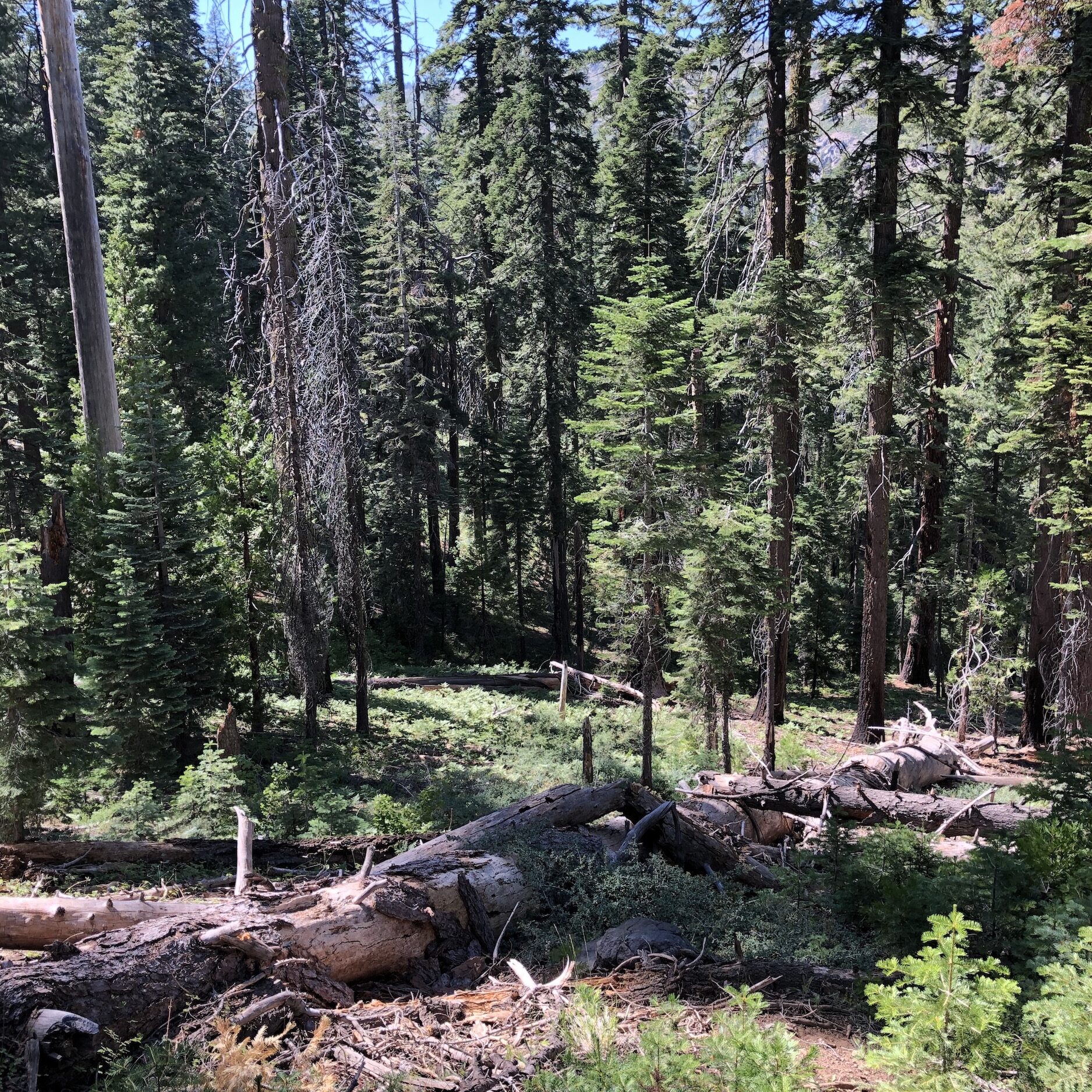
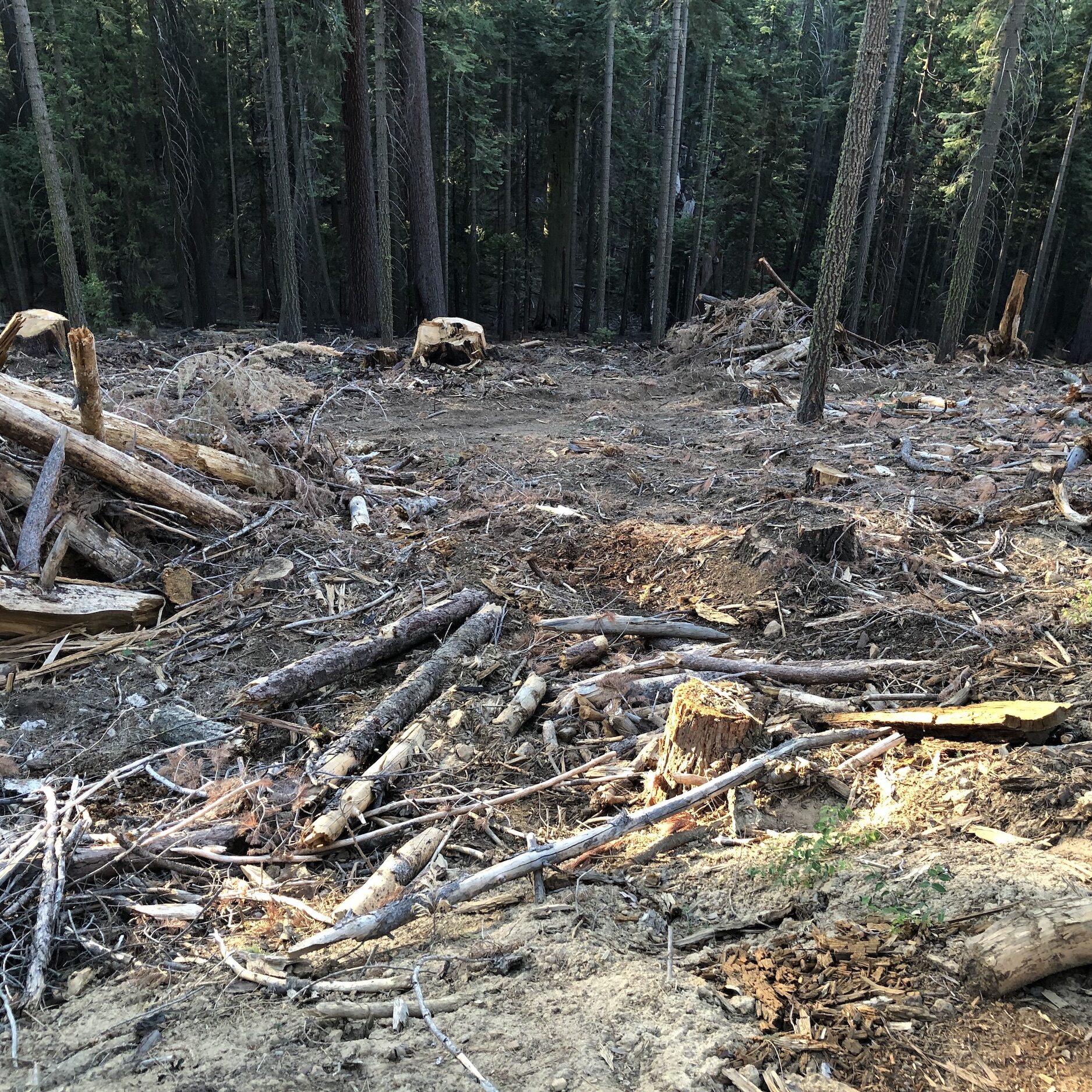
In preparing these timber sales, which financially benefit the Forest Service, the Forest Service routinely:
a) fabricates project data to falsely claim that the forests are much denser than they are;
b) ignores abundant scientific research that documents historical forests as much denser than the Forest Service claims, and
c) disregards stacks of scientific research findings that such logging projects not only make climate change worse but also increase overall wildfire severity and rate of spread and the threat to communities.
In one telling example, Sierra National Forest proposed intensive logging in approximately 50,000 acres of mature and old-growth forest that burned lightly in the 2020 Creek fire, claiming that it remained too overgrown after the fire and would supposedly burn too intensely in the next fire. Aside from the inherent illogic of the Forest Service's claim-given that this exact area, with its current density, burned at low intensity during the big Creek fire-JMP discovered that the Forest Service was simultaneously making the opposite claim in the same area. In a 2022 study by Forest Service-funded scientists (Steel et al. 2022), the agency claimed that this same area had been converted to non-forest by high-intensity fire-a claim that the Forest Service used to promote more post-fire logging. JMP, in a 2023 Objection (a type of administrative appeal) filed with the Forest Service, challenged the Forest Service's logging project based in part on this discrepancy and forced the agency to reconsider its logging plans.
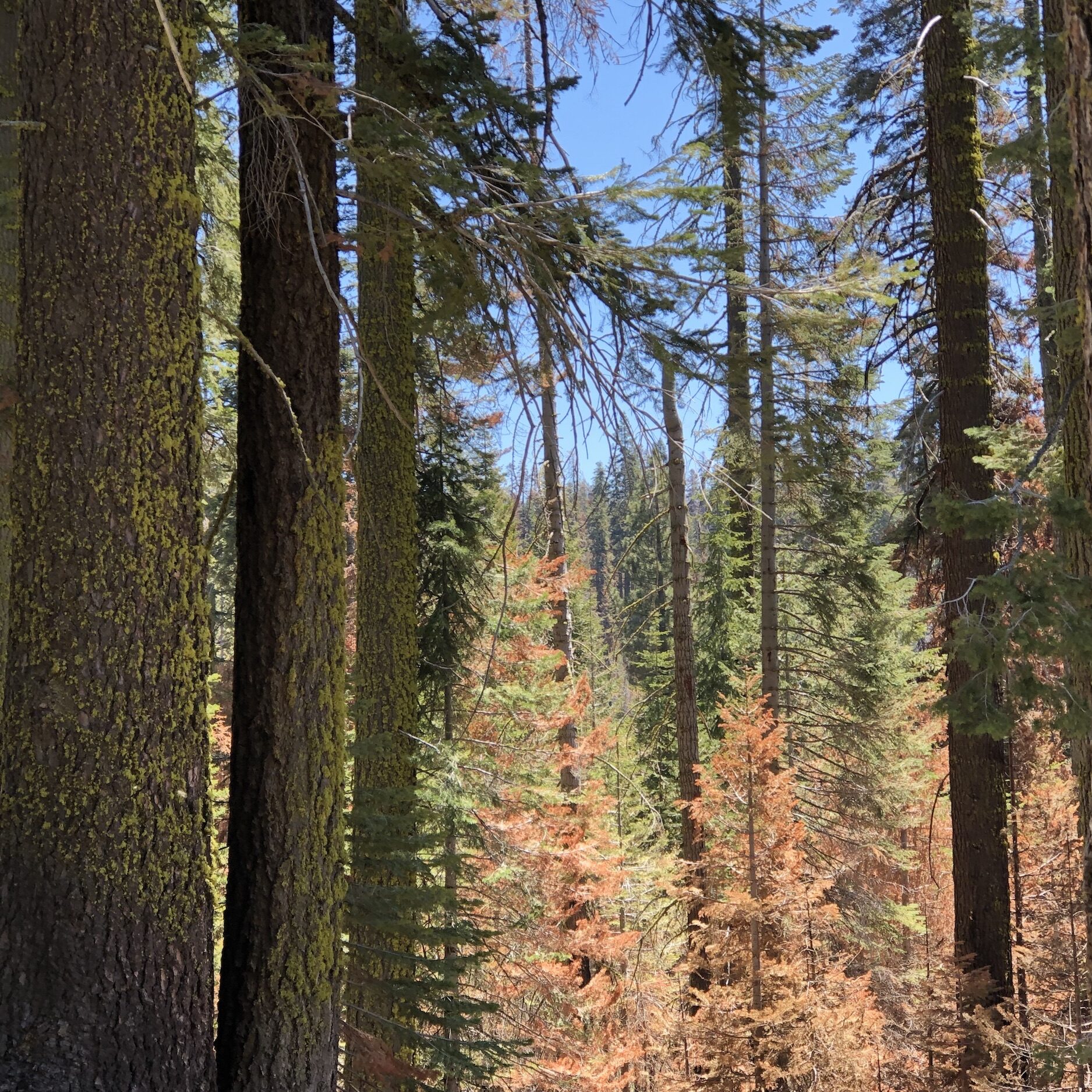
Example Comments
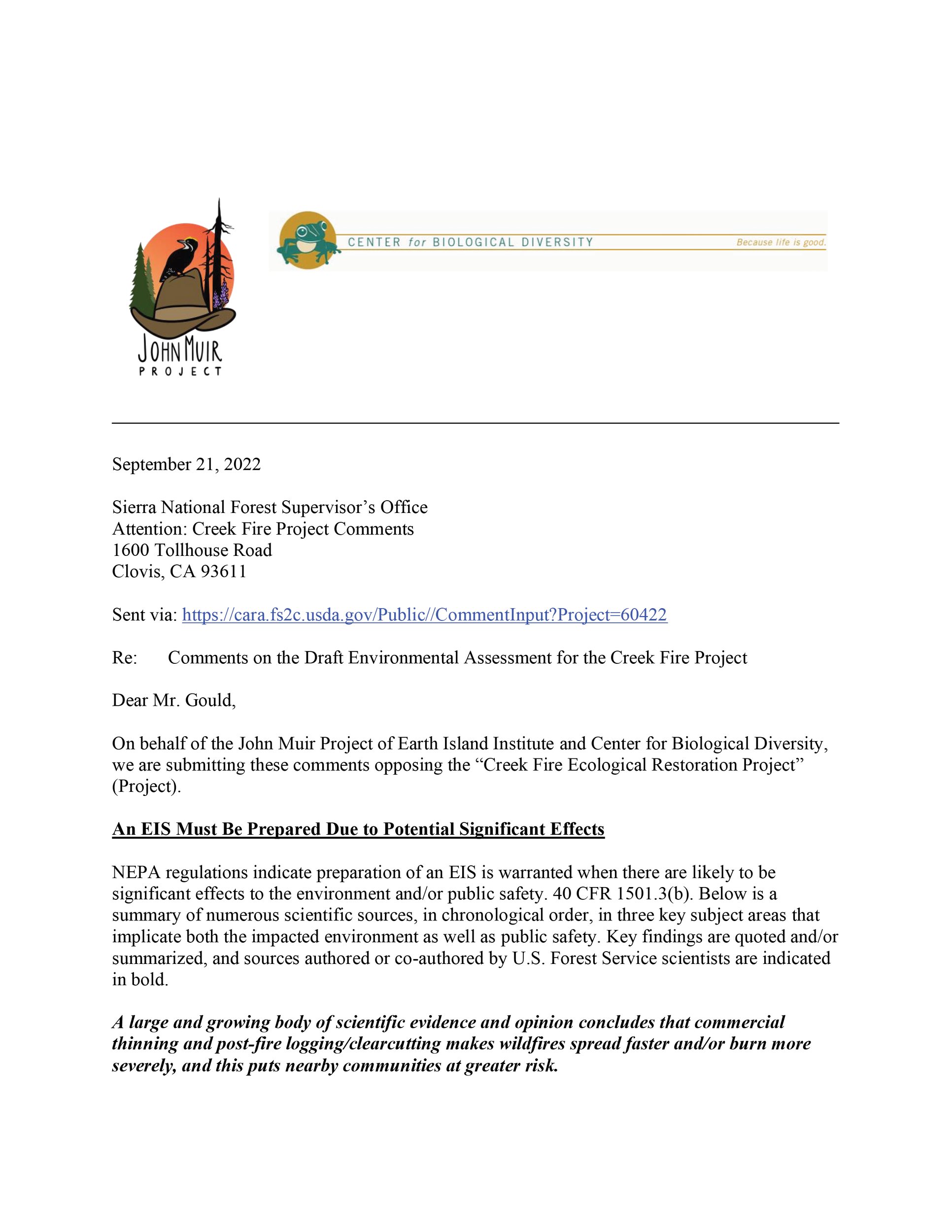
Creek Fire Environmental Assessment Comments
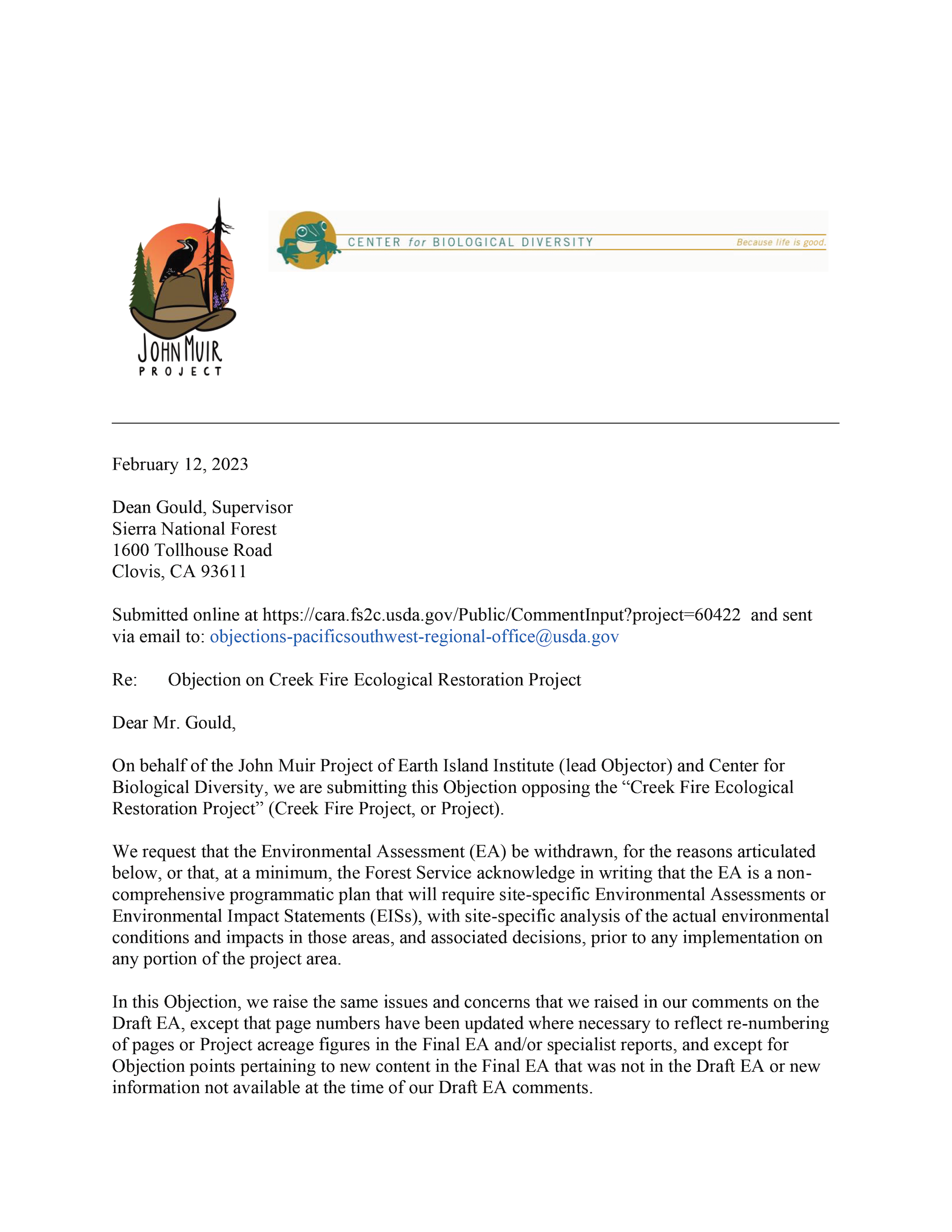
Creek Fire "Restoration" Logging Objection
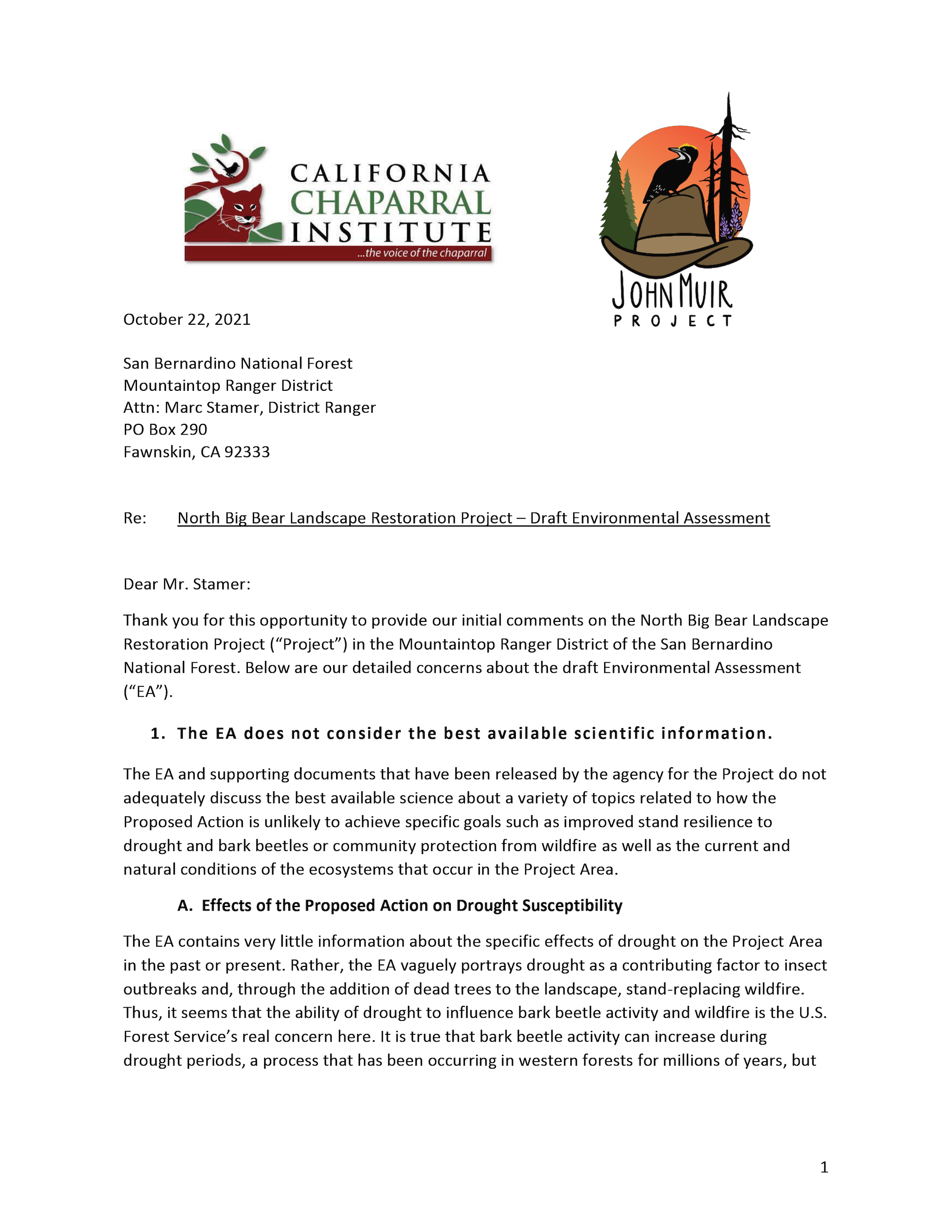
North Big Bear Environmental Assessment
